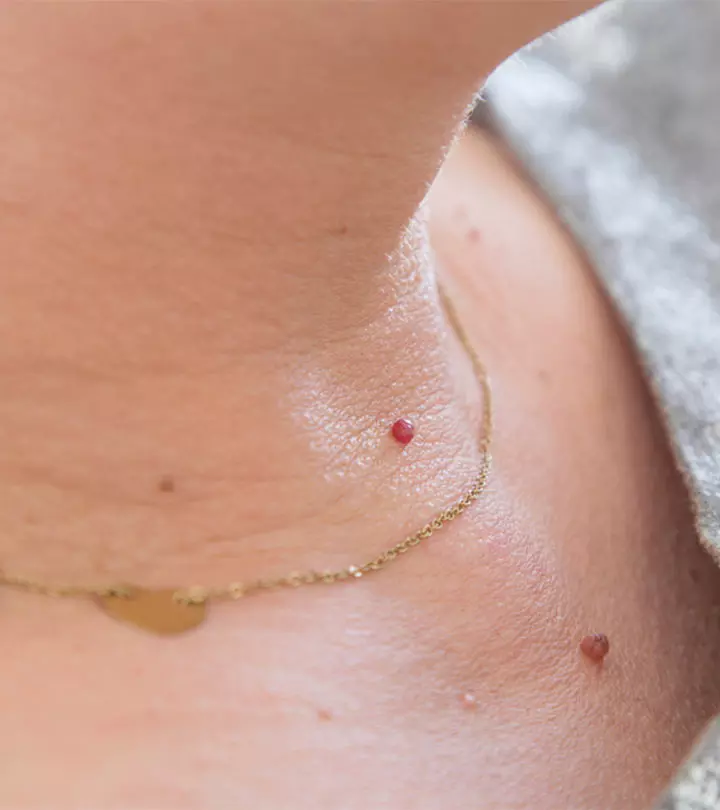
Here’s everything you need to know about how to deal with protruding, annoying skin tissues
Do you find the skin tags hanging from your skin bothersome? Skin tags are small benign growths that are quite common. They can look unappealing, however. The skin folds that contain skin tags, such as the neck, armpit and groin, are where they are most common. What causes skin tags? This article will provide all the information you need about skin tags: their appearance, causes and symptoms, and treatment. Continue reading!
What are skin tags?
Acrochordons are skin tags that are not painful and non-cancerous growths on the skin. Both men and women can obtain them. About 50-60% of adults will develop skin tags. After 40, the chances of developing a skin tag increase.
Anywhere on the body can develop skin tags. They are most common in skin folds like the neck, armpit and groin.
They are often found in areas of friction. They can grow to 5mm in length. They can reach a length of 1-2 cm in rare cases.
Identifying a skin tag and determining the best way to remove it is easier. Let’s find out how they look.
What Does a Skin Tag Look Like?
A skin tag is a small piece of skin that hangs from the skin with a small stalk. It is soft and round and usually matches the color of your skin. The skin tag’s surface may appear irregular or smooth. Most skin tags are harmless and do not cause any discomfort. Some skin tags may bleed if they are rubbed against jewelry or clothing.
Small skin tags can be as small as 1 to 2mm in width and height. Mid-sized skin tags are approximately 5 mm in length and 2 mm in width. Larger skin tags can appear bag-like. Dry skin may be experienced in the vicinity.
There are many reasons skin tags can form, including obesity, diabetes and genetics. Learn more about the causes of skin tags.
What causes skin tags?
Although the cause of skin tags remains unknown, they can be associated with ( 1):
- Normal cholesterol levels
- Type 2 diabetes
- Cardiovascular disease
- Obesity and being overweight
- Genetic factors
- Frequent skin irritation
- Loss of skin elasticity
- Hormonal imbalances
Some studies also link skin tags to certain viruses. A 2008 study found a link between skin tags and human papillomavirus ( 2).
Skin tags may also be caused by insulin resistance. In 2010, a study found a strong link between insulin resistance and skin tag ( 3).
Skin tags pose a risk factor.
- Being overweight or obese
- Hormonal changes or pregnancy
- Skin tags are a family member’s problem
- Type 2 Diabetes or Insulin Resistance
- Human papillomavirus infection
These issues are often associated with skin tags. You may need to see a doctor for a quick evaluation. Continue reading to learn more about skin tag diagnosis.
Diagnosis of Skin Tag
Your doctor might ask you about your medical history. They may also conduct a physical exam to determine if there is a skin tag or another type of skin growth. The doctor might also record the BMI (Body Mass Index) of obese patients. Before suggesting treatment ( 4), the doctor might also examine serum levels of total cholesterol and low-density lipoprotein (LDL) before recommending treatment.
Skin tag removal can be done with both over-the-counter and medical treatments. Continue reading to learn how you can get rid of skin tags.
How to treat skin tags
A doctor can remove a skin tag. These are some of the methods that a doctor might use:
- Cryotherapy is a method of freezing the skin with liquid nitrogen.
- Surgical removal using a scalpel or scissors.
- High-frequency electrical energy is used to burn the skin tag.
- Ligation is the process of tying it with surgical thread to stop its blood flow.
Some patients may need to apply an anesthetic cream topically to ease the pain. The excision leaves a tiny scar that will heal naturally.
Removing skin tags at your home is not recommended, as this can lead to infection or injury. If you feel confident that you want to remove the skin tag at home, there are some home remedies that you can try.
Home Remedies To Remove Skin Tags
Although there are many home remedies for skin tag removal, they are not supported by scientific research. These are some of the best:
Apple Cider Vinegar
1. Make sure to soak a cotton ball with apple cider vinegar.
2. Secure it to the skin tag with a bandage. It should be left on for at least 30 minutes.
3. Use mild soap and warm water to wash the area. Dry it with a towel.
4. To see results, repeat this procedure twice daily.
This remedy can take between 2 and 3 weeks to remove the skin tag completely.
Tea Tree Oil
1. Use a cotton swab to clean the affected area. Apply tea tree oil to the skin.
2. Place a bandage over it, and let it sit for about 10-15 minutes.
3. Remove the bandage, and wash the area with lukewarm soap.
This remedy may take up to a few weeks before removing the tag.
Iodine
1. To protect the skin around the tag, apply petroleum jelly.
2. Apply iodine to the skin tag. Cover it with a bandage. Wait until the iodine has dried completely.
This can be repeated twice daily until the tag is removed.
Although it’s not a good idea, some people choose to remove skin tags from their homes. There are also chances that the skin tag will recur. Here are some tips to prevent a recurrence. These tips are described in the next section.


